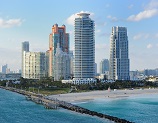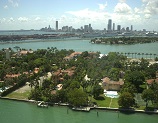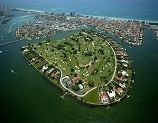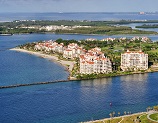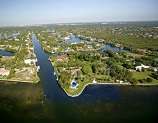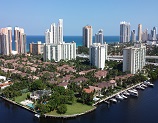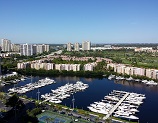Existing-Home Sales Rise in November, Market Likely Stabilizing
WASHINGTON, December 31, 2007 - Existing-home sales rose slightly in November, indicating a stabilization in housing in the wake of mortgage disruptions earlier this year, according to the National Association of Realtors®.
Total existing-home sales – including single-family, townhomes, condominiums and co-ops – rose 0.4 percent to a seasonally adjusted annual rate1 of 5.00 million units in November from an upwardly revised pace of 4.98 million in October, but are 20.0 percent below the 6.25 million-unit level in November 2006.
Lawrence Yun, NAR chief economist, said the market appears to be stabilizing. “Near term, existing-home sales should continue to hover in a narrow range, just as they have since September, and that’s good news because it’ll be a further sign that the housing market is stabilizing,” he said. “Mortgage interest rates are near historic lows and the most current data shows decelerating price declines, along with a modest reduction in the number of homes on the market.” Disruptions in mortgage availability and pricing peaked in August, which caused sales to slow in subsequent months.
The national median existing-home price for all housing types was $210,200 in November, down 3.3 percent from November 2006 when the median was $217,300, but there remains a downward drag on the national median as the mix of closed sales has shifted away from expensive markets.
“Just like the weather, there are large local variations in home prices,” Yun said. A quarterly examination of price performance on a metropolitan basis shows nearly two-thirds of metro areas are showing price increases. Among the many metros experiencing healthy local price gains are Farmington, N.M.; Reading, Pa.; Columbia, S.C., and Fargo, N.D.
Total housing inventory declined 3.6 percent at the end of November to 4.27 million existing homes available for sale, which represents a 10.3-month supply3 at the current sales pace, down from a 10.7-month supply in October. “Inventory is still high, and further reduction in prices may be required in some areas to induce buyers back into the market,” Yun said.
NAR President Richard Gaylord, a broker with RE/MAX Real Estate Specialists in Long Beach, Calif., said that Congress should expand affordable financing. “Consumers have some choices with safer conventional financing, but raising the limit on conforming loans would significantly revive home sales,” he said. “This would help creditworthy buyers in hard hit regions like California and Florida by greatly increasing access to low-interest-rate mortgages. NAR, as the leading advocate for homeownership, strongly urges lawmakers to act quickly on this important measure.”
According to Freddie Mac, the national average commitment rate for a 30-year, conventional, fixed-rate mortgage fell to 6.21 percent in November from 6.38 percent in October; the rate was 6.24 percent in November 2006.
Single-family home sales rose 0.7 percent to a seasonally adjusted annual rate of 4.40 million in November from 4.37 million in October, but are 19.9 percent below the 5.49 million-unit pace in November 2006. The median existing single-family home price was $208,700 in November, down 3.7 percent from a year earlier.
Existing condominium and co-op sales slipped 1.6 percent to a seasonally adjusted annual rate of 600,000 units in November from 610,000 in October, and are 20.6 percent below the 756,000-unit level in November 2006. The median existing condo price4 was $221,100, down 0.7 percent from in November 2006.
Regionally, existing-home sales in the West increased 10.3 percent in November to a level of 960,000, but are 25.0 percent below a year ago. The median price in the West was $325,800, which is 6.8 percent lower than November 2006.
In the Midwest, existing-home sales were unchanged at an annual rate of 1.18 million in November, but are 16.9 percent below November 2006. The median price in the Midwest was $163,000, down 0.5 percent from a year ago.
Existing-home sales in the South declined 2.0 percent to an annual rate of 1.99 million in November, and are 19.4 percent below a year ago. The median price in the South was $174,200, which is 2.5 percent below November 2006.
Existing-home sales in the Northeast fell 3.3 percent to an annual pace of 870,000 in November, and are 19.4 percent below November 2006. The median price in the Northeast was $258,300, down 3.2 percent from a year ago.
The National Association of Realtors®, “The Voice for Real Estate,” is America’s largest trade association, representing more than 1.3 million members involved in all aspects of the residential and commercial real estate industries.
# # #
1 The annual rate for a particular month represents what the total
number of actual sales for a year would be if the relative pace for
that month were maintained for 12 consecutive months. Seasonally adjusted
annual rates are used in reporting monthly data to factor out seasonal
variations in resale activity. For example, home sales volume is normally
higher in the summer than in the winter, primarily because of differences
in the weather and family buying patterns. However, seasonal factors
cannot compensate for abnormal weather patterns.
Existing-home sales, which include single-family, townhomes, condominiums and co-ops, are based on transaction closings. This differs from the U.S. Census Bureau’s series on new single-family home sales, which are based on contracts or the acceptance of a deposit. Because of these differences, it is not uncommon for each series to move in different directions in the same month. In addition, existing-home sales, which generally account for 85 percent of total home sales, are based on a much larger sample – nearly 40 percent of multiple listing service data each month – and typically are not subject to large prior-month revisions.
2 The only valid comparisons for median prices are with the same period a year earlier due to the seasonality in buying patterns. Month-to-month comparisons do not compensate for seasonal changes, especially for the timing of family buying patterns. Changes in the geographic composition of sales can distort median price data. Year-ago median and mean prices sometimes are revised in an automated process if more data is received than was originally reported.
3 Total inventory and month’s supply data are available back through 1999, while single-family inventory and month’s supply are available back to 1982. Condos were tracked quarterly prior to 1999 when single-family homes accounted for more than nine out of 10 purchases (e.g., condos were 9.5 percent of transactions in 1998, 8.5 percent in 1990 and only 6.1 percent in 1982).
4 Because there is a concentration of condos in high-cost metro areas, the national median condo price can be higher than the median single-family price. In a given market area, condos typically cost less than single-family homes.
Existing-home sales for December will be released January 24. The next Forecast / Pending Home Sales Index is scheduled for January 8.




